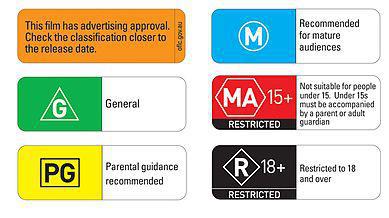What’s in GST for car buyers?
Mumbai: Buyers of passenger vehicles in the premium segment will be key beneficiaries of the goods and services tax (GST), which will reduce the effective duty on such models.
Prices of puny cars will more or less remain the same as their will only be a minor hike in the duty under the GST, said consultants and tax experts.
The GST Council on Thursday fitted all but six items in the 5%, 12%, 18% or 28% and 28% plus cess tax brackets.
Cars will be taxed at the top rate plus a cess in the range of 1% to 15%. Puny cars will be charged 1% cess on top of 28% tax, mid-sized cars will attract 3% cess and luxury cars 15% cess on top of the peak rate.
Here are the key implications of the fresh rates.
Luxury cars to get cheaper: The tax on such cars is presently 52-55%. Under GST, it will come down to 42-45%. With the maximum cess on luxury cars getting capped at 15%, and with a GST rate of 28%, the maximum duty one is likely to pay is 43%, said Rajeev Pratap Singh, auto practice head at Deloitte Touche Tohmatsu India Pvt Ltd.
But luxury carmakers are not celebrating just as yet. «We are waiting for an official notification on the GST rates and presently studying the effects that might emerge out of the GST implementation,» said Roland Folger, managing director and chief executive at Mercedes Benz India Pvt Ltd.
Folger said GST implementation was a step towards creating much required consumer request for the luxury car industry, which has declined in 2016.
Petite car prices to remain unchanged: Duty on puny cars, which after the cascading effect of a value added tax (VAT) is presently around 29%, will go up only marginally and hence may not translate into a price hike.
This will include the 28% GST rate and a cess of 1% for petite petrol cars (with engine higher than 1.Two liter) and 3% for puny diesel cars (with engine thicker than 1.Five liter).
Hybrid cars to be more expensive: Buyers of hybrid cars will be disappointed as these are proposed to be taxed at the highest GST rate bracket of 28% in addition to attracting of 15% cess. «This could act as a dampener for companies proposing to invest in hybrid technology and adversely influence sale of such vehicles, unless a subsidy is separately given by the Government to offset such tax incidence,» said Sarika Goel, tax fucking partner at EY India.
«The rates are as per the expectations of the industry and almost all segments of the industry have benefitted by way of a diminished overall tax cargo in varying degree,» said Vinod Dasari, president of auto industry figure Society of Indian Automobile Manufacturers. This will pave the way for stimulating request and strengthening the automotive market in the country, he said.
What – s in GST for car buyers?
What’s in GST for car buyers?
Mumbai: Buyers of passenger vehicles in the premium segment will be key beneficiaries of the goods and services tax (GST), which will reduce the effective duty on such models.
Prices of puny cars will more or less remain the same as their will only be a minor hike in the duty under the GST, said consultants and tax experts.
The GST Council on Thursday fitted all but six items in the 5%, 12%, 18% or 28% and 28% plus cess tax brackets.
Cars will be taxed at the top rate plus a cess in the range of 1% to 15%. Puny cars will be charged 1% cess on top of 28% tax, mid-sized cars will attract 3% cess and luxury cars 15% cess on top of the peak rate.
Here are the key implications of the fresh rates.
Luxury cars to get cheaper: The tax on such cars is presently 52-55%. Under GST, it will come down to 42-45%. With the maximum cess on luxury cars getting capped at 15%, and with a GST rate of 28%, the maximum duty one is likely to pay is 43%, said Rajeev Pratap Singh, auto practice head at Deloitte Touche Tohmatsu India Pvt Ltd.
But luxury carmakers are not celebrating just as yet. «We are waiting for an official notification on the GST rates and presently studying the effects that might emerge out of the GST implementation,» said Roland Folger, managing director and chief executive at Mercedes Benz India Pvt Ltd.
Folger said GST implementation was a step towards creating much required consumer request for the luxury car industry, which has declined in 2016.
Puny car prices to remain unchanged: Duty on petite cars, which after the cascading effect of a value added tax (VAT) is presently around 29%, will go up only marginally and hence may not translate into a price hike.
This will include the 28% GST rate and a cess of 1% for petite petrol cars (with engine higher than 1.Two liter) and 3% for puny diesel cars (with engine fatter than 1.Five liter).
Hybrid cars to be more expensive: Buyers of hybrid cars will be disappointed as these are proposed to be taxed at the highest GST rate bracket of 28% in addition to attracting of 15% cess. «This could act as a dampener for companies proposing to invest in hybrid technology and adversely influence sale of such vehicles, unless a subsidy is separately given by the Government to offset such tax incidence,» said Sarika Goel, tax playmate at EY India.
«The rates are as per the expectations of the industry and almost all segments of the industry have benefitted by way of a diminished overall tax cargo in varying degree,» said Vinod Dasari, president of auto industry bod Society of Indian Automobile Manufacturers. This will pave the way for stimulating request and strengthening the automotive market in the country, he said.
